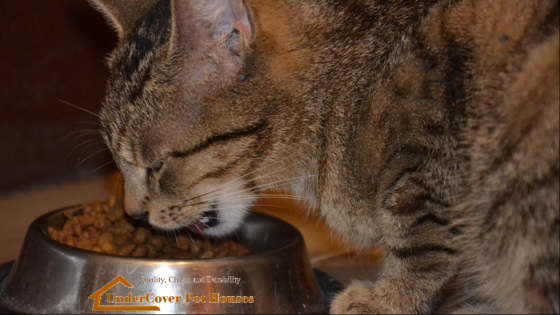 Loading... Please wait...
Loading... Please wait...Cat Health and Nutrition: Exploring Raw, Canned, and Dry Food Options
Posted by Danny MacDonald on 2023 Aug 15th

When it comes to keeping our feline companions healthy and thriving, choosing the right type of cat food is a key decision.
Cats have specific dietary needs that vary based on their age, activity level, and overall health.
In this article, we'll look into three primary types of cat food: raw, canned, and dry.
Each option has its own set of benefits and considerations to keep in mind as you provide the best nutrition for your beloved feline friend.
- Raw Food
Raw food diets for cats mirror their natural diet in the wild, consisting primarily of raw meat, organs, and bones. Proponents of raw diets argue that they provide essential nutrients, including natural enzymes and taurine, which may degrade during cooking processes.
But feeding raw food requires careful handling and attention to hygiene to minimize the risk of bacterial contamination. It's essential to consult with a veterinarian before transitioning your cat to a raw diet to ensure all nutritional needs are met.
- Canned Food
Canned cat food, often referred to as wet food, contains a higher moisture content compared to dry kibble. This added hydration can be beneficial for cats, especially those prone to urinary tract issues or dehydration.
Canned food comes in a variety of flavors and textures, making it a great choice for picky eaters. It's important to read the labels and choose high-quality canned food with a balanced nutritional profile, as some options may be higher in fillers and additives.
- Dry Food
Dry or processed cat food, commonly known as kibble, offers convenience and a longer shelf life. Many cat owners appreciate the ease of measuring and storing dry food.
Additionally, some dry kibble is designed to promote dental health by helping to reduce tartar buildup as cats chew.
However, it's crucial to select high-quality dry food that is rich in protein and doesn't rely heavily on carbohydrates. Remember cats are carnivores, meaning their diet should primarily consist of animal-based proteins.
Tips for Feeding Different Cat Types
- Kittens and young cats: For kittens, canned food is often recommended due to its high moisture content and balanced nutrition. Growing kittens require a diet rich in protein and essential nutrients. As they mature, a gradual introduction to high-quality dry food can be considered.
- Adult cats: Adult cats’ benefit from a well-rounded diet that includes a mix of high-quality canned and dry food. This approach provides hydration from wet food and dental benefits from kibble.
- Senior cats: Older cats may have dental issues or reduced appetite. A combination of wet and dry food can help cater to their changing needs, ensuring they receive proper nutrition and stay hydrated.
- Cats with health issues: Cats with specific health concerns, such as diabetes or kidney disease, may require special diets. Consult your veterinarian to determine the most appropriate type of food and feeding schedule.
Transitioning Between Cat Diets
When transitioning your cat's diet, do so gradually over the course of several days to avoid digestive upset. Mix the new food with the old food in increasing proportions until the transition is complete.
Bottom Line
Choosing the right cat food is a decision that should be based on your cat's individual needs, preferences, and health considerations. Whether you opt for raw, canned, or dry food, prioritize high-quality options that provide essential nutrients for your cat’s well-being.
Regular veterinary check-ups and consultations are essential to ensure your cat's diet aligns with their specific health requirements.
